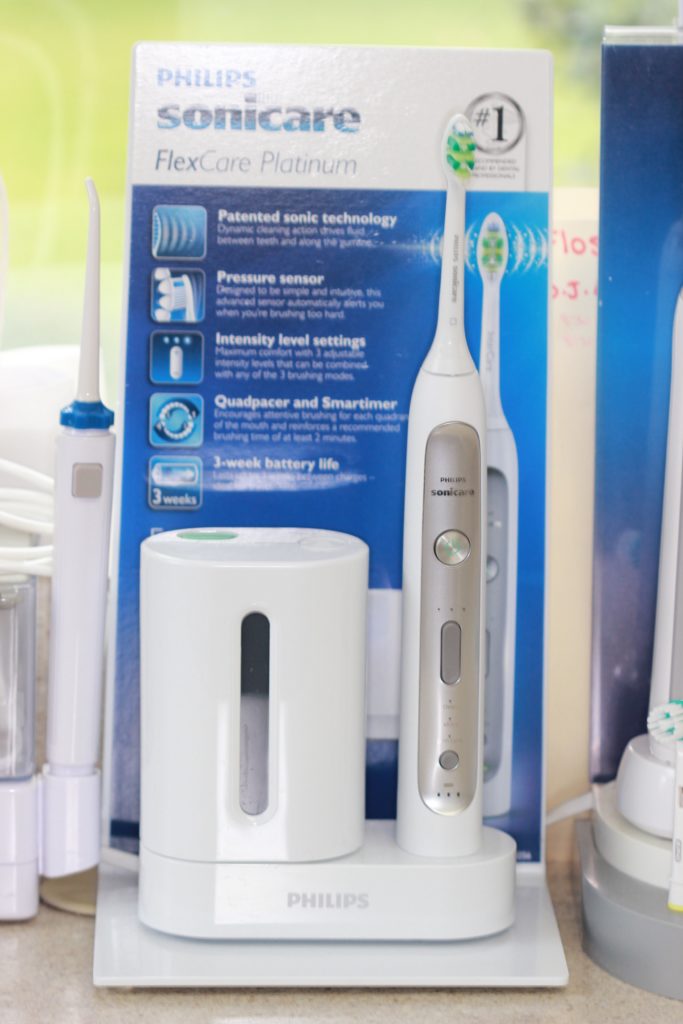
Brushing your teeth is important, but if you’re not keeping your toothbrush clean, you may be introducing new bacteria, germs, fungus, and mold into your mouth. In this blog, we explain why it’s so important to keep your toothbrush sanitized and provide tips to decontaminate your toothbrush.
Why Toothbrushes Need to Be Sanitized
Toothbrushes are used to remove bacteria, plaque, and food from the mouth. After you brush, your toothbrush is damp and potentially covered with germs and debris. If they’re not properly cleaned, sanitized, and stored, toothbrushes can become a breeding ground for bacteria, germs, mold, and even fungus. Rather than snap a toothbrush cover over the top and store your toothbrush bristles downward, review our recommendations for keeping your toothbrush sanitary.
10 Tips for Sanitizing Your Toothbrush
Before you brush your teeth, consider the following tips for keeping your toothbrush clean, sanitary, and free from contaminants:
- Prevention – just like your oral health, the best way to sanitize your toothbrush is to prevent decontamination by thoroughly rinsing your toothbrush to ensure it’s free of bacteria, toothpaste, food particles, and other debris after each cleaning.
- Storage – store your toothbrush bristles up and uncovered between brushing to ensure the bristles completely dry before you use it again.
- Don’t cover the bristles – unless you are traveling and need to protect your toothbrush from contaminants, your toothbrush should be stored uncovered, so the bristles can thoroughly dry out between uses.
- Replace periodically – even if you take great care of your toothbrush, it needs to be replaced every three to four months. That goes for replacement heads for mechanical toothbrushes as well.
- Toss after illness – if you’ve been sick, throw away your toothbrush as soon as you feel better. It’s not completely clear how much risk there is for reinfection from toothbrushes, but there is a potential for prolonged or continued sickness.
- Watch for signs of wear – if your toothbrush looks worn, smells strange, or otherwise shows signs of wear before it’s time for a new one, go ahead and exchange it early.
- Disinfect with mouthwash – after you brush, you can swirl the toothbrush in mouthwash for 30 seconds before rinsing to remove bacteria. You can also soak the bristles in mouthwash once a week for about 15 to 20 minutes.
- Use cold or lukewarm water – it may seem like a good idea to sanitize your toothbrush with hot water, but this can actually dissolve the glue that holds the toothbrush together and warp the bristles.
- Travel tips – if you’re traveling, keep your toothbrush covered while you’re going from place to place. Before use, remove the toothbrush from its container, thoroughly rinse with water, disinfect the bristles with mouthwash, and store upright to dry.
- Consider a toothbrush cleaner – there are many toothbrush disinfectant solutions and sanitizer tools that promise to remove all contaminants from your toothbrush. If you have a compromised immune system or you’re just very concerned about toothbrush sanitation, these can offer even better results on top of regular cleaning and sanitizing, but for most people, investing in these kinds of sanitation systems isn’t necessary, especially if you’re getting a new toothbrush regularly as recommended by the American Dental Association.
Meet the McCarl Dental Group Team
The McCarl name has been synonymous with exceptional dentistry in Millersville, Maryland since 1938. Today, the skilled dentists at the McCarl Dental Group are still working to help our patients, families, and communities keep their smiles healthy for a lifetime. Learn more about our range of dental services by calling our knowledgeable dentistry team today. We look forward to hearing from you soon.
